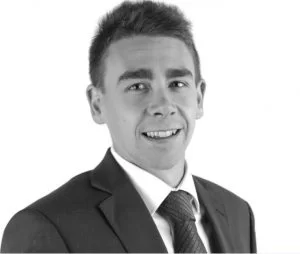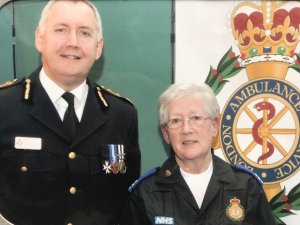Epilepsy Negligence Compensation Claim

Contact
Table of Contents
Nicholas Leahy, an Associate in the Clinical Negligence team at Osbornes Law, has recently settled a long-running fatal medical negligence claim against Sheffield Teaching Hospital NHS Foundation Trust, relating to injuries and death caused by negligent complications during a neurosurgical procedure known as a selective amygdalohippocampectomy (SAH).
Facts of the case
The Deceased, AB, had a history of drug resistant convulsive epileptic fits (absences and daytime wandering), and was referred to Sheffield Teaching Hospital in early 2016. It was determined that she would be a good candidate for a right SAH, a procedure which she was told could help prevent further fits.
SAH procedure takes place
The surgeon (‘DB’) saw AB at his clinic in March 2016, and AB decided to go ahead with the right SAH procedure, which took place a few months later on 7 November 2016. The procedure was to be carried out using what is known as the transsylvian approach. Prior to the procedure an MRI scan was performed in order to use the Brainlab neuronavigation system. However, following the initial surgical incision, DB was unable to locate the temporal horn of the lateral ventricle within the brain, as he had been expecting. In order to locate this structure, he then dissected deeper at different trajectories within the brain. During the procedure, DB realized he had dissected incorrectly, and began to experience physical symptoms. He stepped away from the operating table and called for another consultant surgeon to attend. The anaesthetist reported that DB told him he had ‘made a mistake’. This consultant was able to identify the right temporal lobe and frontal lobe. After some time DB re-scrubbed and attempted to finish the procedure, however then began to feel faint once more and so called his colleague to re-attend. Eventually the procedure was finalised and the registrar closed the wound whilst DB was still in theatre.
Patient observed to be extensor posturing
During the recovery period and whilst still under the anaesthetist’s care, AB was observed to be extensor posturing as she was waking. As she was so unwell, she was re-anaesthetised and an urgent CT scan was requested. She was cared for in a level 3 intensive care bed. 7 days later an MRI scan was performed which showed that there were 3 surgical tracts beyond the intended surgical field, and associated damage to the brain tissue in these areas. The report concluded:
“…there was evidence of tracts of haemorrhage across the basal ganglia from right to left and also into the brain stem from the right side. These haemorrhagic tracts are intimately associated with acute infarct in adjacent perforated territories”.
Withdrawal of artificial ventilation
AB’s family had been told about her poor and deteriorating condition following surgery. Following the MRI scan on 14 November 2016, discussions were held with AB’s family and they were informed that her injuries meant she would never return to a meaningful life where she would be able to make decisions for herself or control her movements. A decision was made to withdraw artificial ventilation and AB sadly passed away on 19 November 2016 at just 50 years of age.
Post-mortem examination
A post-mortem examination took place and found:
“a massive, recent intracranial (intraventricular and intraparenchymal) bleed, with oedema and infarction of the surrounding brain tissue, was confirmed as the final event leading to the left-sided weakness, loss of consciousness and brainstem death”.
Police/CPS Investigation
Following these events investigations were undertaken by the police/CPS, who considered whether there was enough evidence to charge DB with gross negligence manslaughter. This meant that the inquest proceedings, and the civil proceedings, were effectively placed on hold for nearly 6 years.
In order to succeed in prosecuting an individual for the offence of manslaughter by gross negligence, the prosecution must establish the following beyond reasonable doubt:
- That the defendant owed an existing duty of care to the Deceased;
- That the defendant negligently breached that duty of care (by a negligent act or omission);
iii. At the time of the breach there was a serious and obvious risk of death. Serious, in this context, qualifies the nature of the risk of death as something much more than minimal or remote. Risk of injury or illness is not enough. An obvious risk is one that is present, clear, and unambiguous. It is immediately apparent, striking and glaring rather than something that might become apparent on further investigation;
- It was reasonably foreseeable at the time of the breach of the duty that the breach gave rise to a serious and obvious risk of death;
- The breach of the duty caused or made a significant (i.e., more than minimal) contribution to the Deceased’s death; and
- In the view of the jury, the circumstances of the breach were truly exceptionally bad and so reprehensible as to justify the conclusion that it amounted to gross negligence and required criminal sanction.
It was eventually decided that there was insufficient evidence to prosecute DB on the above grounds. The Deceased’s family asked for a review of this decision under the Victim’s Right to Review Scheme.
The review upheld the original decision, that there was insufficient evidence for criminal charges to be brought against the individual surgeon.
Inquest
Following the outcome of the above review, the case was referred back to the Coroner, who listed the final inquest to take place over 5 days in October 2023. Prior to the inquest the Coroner had indicated that she was considering a conclusion of unlawful killing, in addition to the other conclusions available to a Coroner.
Following the evidence given at the inquest, the Coroner concluded:
“On 7th November 2016, AB underwent neurosurgical operation at the Royal Hallamshire with the hope of ameliorating her seizures. An incision was made in the insula aiming for the temporal horn in the wrong trajectory. AB’s head had previously been fixed prior to the operation, but the head position moved intraoperatively, a matter of which surgeons were unaware. The first incision was made excessively deep and at the wrong trajectory, two subsequent incisions were made and the third tract was made with Brainlab. On waking it was apparent AB had sustained a serious brain injury. She died in November 2016. On the balance of probabilities, she would have died as a result of the first incision…This concludes the inquest other than to express condolences to family”
A conclusion of unlawful killing was not made.
Epilepsy compensation claim
AB’s family instructed Stephanie Prior and Nicholas Leahy (Associate) to represent them shortly after the events in question, in early 2017.
Stephanie and Nick represented the family at the inquest, with the assistance of Counsel, Tom Beasley of No 5 Chambers.
Following the Coroner’s inquest, a Letter of Claim and Schedule of Loss was sent to the Defendant on 21 November 2023. The Defendant responded in January 2024, indicating that liability would not be contested in this case. The Defendant made an offer to settle the case at the same time which the Deceased’s family accepted.
Following the settlement, Nicholas Leahy commented:
“I am pleased that over 7 years after AB’s tragic death, the civil proceedings were able to be concluded quickly and without litigation, avoiding further distress to AB’s family. It is hoped that as a result of this case lessons have been learned at the Trust to prevent something like this from happening again in future”.
Contact Osbornes Law
If you’ve suffered due to a medical procedure, our Medical Negligence solicitors are here to support you. Contact Osbornes Law by filling out the form below or calling 020 7485 8811 to speak to us about a surgical negligence claim or fatal negligence claim.
Share this article
“Small but very effective and experienced team so every client benefits from the personal touch but also highly skilled litigation know-how. Capability of the team means they can handle all aspects of very complex cases as well as straightforward matters.”
“Osbornes Law is an established firm which handles a breadth of complex and high-value clinical negligence matters.”
Contact us today
Call us 020 7485 8811
Email us Send us an email and we’ll get back to you
News and Insights of Fatal Claims VIEW ALL
- 29.4.2025
Five-Figure Settlement in Fatal Medical Negligence Case
Osbornes Law secures a five-figure compensation following a fatal medical negligence claim Osbornes acted for our client, E, who brought...
Read more - 30.4.2024
Settlement In Neonatal Death Case
Settlement in fatal medical negligence case against King’s College Hospital Nick Leahy, Associate in our Clinical Negligence department, recently...
Read more - 1.8.2023
Bowel Ischaemia Fatality – Client Story
Jodi Newton, a Partner in the Clinical Negligence Department at Osbornes Law, has recently settled a long running fatal medical...
Read more - 13.1.2023
Delayed diagnosis of appendiceal cancer
The medical negligence team at Osbornes Law has recently settled a case involving a patient who passed away following a...
Read more - 14.7.2022
Insulin overdose in hospitals due to limited staff...
A century ago, insulin was first used to treat a 14-year-old boy dying of type 1 diabetes. A hundred years later,...
Read more - 31.1.2022
Recent fatal medical negligence cases
Osbornes Law specialises in helping families who have suffered a fatality due to inadequate medical care. Our specialist team has...
Read more - 20.9.2021
Osbornes Law Represents Family in Fatal Medical Negligence...
Negligent Hospital Care Leads to Tragic Death Osbornes Law is representing the family of a former NHS employee who suffered...
Read more - 9.7.2021
Legal Support For Bereaved Families
What legal support is available for bereaved families? The loss of a loved one is an extremely distressing time for...
Read more - 8.7.2021
Failure to prescribe anti-coagulant medication proves fatal
Executor of the Estate of DS and another v James Paget University Hospitals NHS Foundation Trust The Clinical Negligence team...
Read more - 18.5.2021
Fatality of child caused by incorrect diagnosis
KRB was born in 2000 and was a patient at Whipp’s Cross Hospital. In the Autumn of 2014 he was feeling...
Read more - 13.10.2020
Parental Bereavement Leave & Pay
What is Parental Bereavement Leave and Pay? Parental Bereavement Leave and Pay is something that many parents will not be...
Read more - 13.11.2019
Fatal Claim against West London NHS Trust
Claim Against West London NHS Trust Case Overview I recently acted in a fatal medical negligence claim against West London...
Read more














